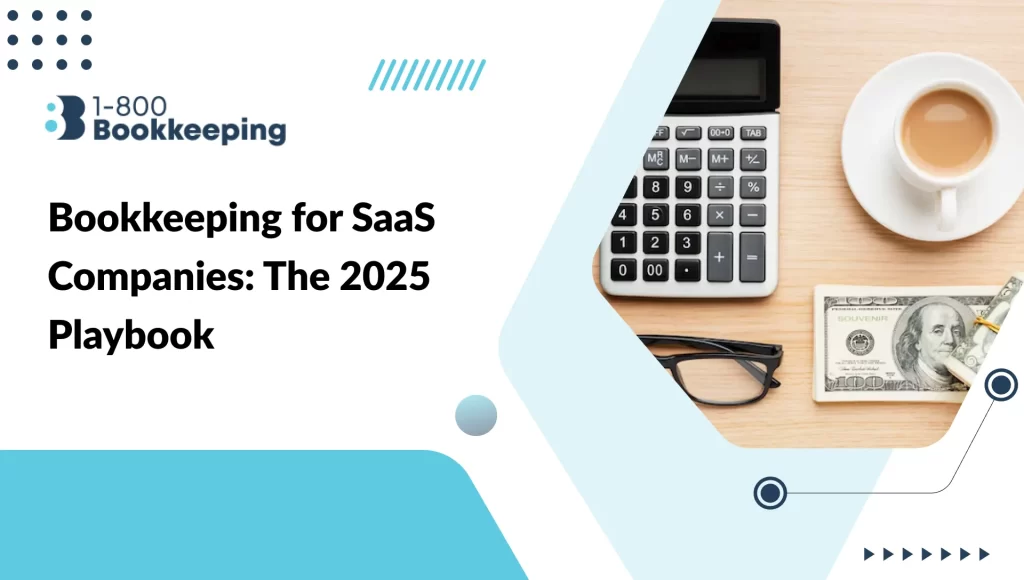A business’s smooth operation hinges on its ability to track financial activities accurately and confidently report on its financial position.
This is where the accounting cycle plays an indispensable role. If you are new to the concept of the accounting cycle or simply want to understand its importance and workings in greater detail, this article is for you.
What is the Accounting Cycle?
The accounting cycle is a comprehensive process designed to record and process a company’s financial transactions from their occurrence to their representation in financial statements and, finally, to close the accounts. The cycle typically follows a series of steps repeated in each accounting period, whether monthly, quarterly, or annually. This systematic approach ensures all financial data is accounted for and accurately reported.
Streamline Your Accounting Cycle with 1800Bookkeeping
1800Bookkeeping offers tailored services that simplify and enhance your business’s accounting cycle. With our expertise, your financial transactions will be meticulously recorded, classified, and reported, ensuring precision and compliance.
Our cutting-edge accounting software automates and accelerates many of the routine processes, freeing your team to focus on strategic financial decisions.
Why Is the Accounting Cycle Important?
Grasping the importance of the accounting cycle is instrumental in recognizing its pivotal role within any business framework. The cycle isn’t just a set process. It represents the heartbeat of fiscally responsible management. Ensuring adherence to standard accounting principles and regulations is just the beginning. It sets the stage for compiling trustworthy data that forms the bedrock of robust financial analysis.
These analyses are not just numbers on a ledger; they convey the narrative of a business’s economic activities and performance. Stakeholders, from investors to managers, rely on this information to chart strategic directions, assess risks, and capitalize on opportunities. The accounting cycle’s precision and reliability empower stakeholder decisions with confidence and insight.
Imagine the chaos if there were no standardized accounting cycles. Companies risk slipping into financial disarray with unrecorded transactions, uncaptured expenses, and unsynchronized ledgers—the breeding grounds for inaccuracies, misstatements, and possible fraudulent reporting. Without a structured accounting cycle, the integrity of financial reporting would be compromised, which can have dire consequences for both internal management and external reporting obligations. Economic mismanagement, accidental or intentional, could lead to severe repercussions, including legal penalties, loss of stakeholder trust, and even business failure.
What Are the Benefits of the Accounting Cycle?
Embracing the accounting cycle yields myriad advantages that extend beyond mere compliance. At its core, the cycle systematizes the chronicling of financial events to enhance precision and decrease the chances of error. It’s a quality control measure that ensures each monetary action is documented consistently and correctly.
The methodical cycle plays a crucial role in streamlining the accounting process. With set procedures and checkpoints, it organizes transactions into an orderly flow that leads to accurate recording. This streamlined approach aids in safeguarding the integrity of financial data, thereby maintaining a clear and consistent financial narrative over time.
On the practical front, the accounting cycle aids significantly in preparing financial statements. This task cannot afford procrastination; timely and periodic reporting is essential, especially for publicly traded companies. By having a clear set of steps, accountants can efficiently manage and execute the tasks required to produce balance sheets, income statements, and cash flow statements on schedule.
Moreover, the accounting cycle significantly contributes to intelligent financial analysis. Ensuring that each financial transaction is correctly accounted for lays the groundwork for analyzing various financial metrics that can inform business decisions. With such analyses, companies can better interpret profitability, liquidity, leverage, and other critical indicators of economic health.
Let’s also pay attention to the role of the accounting cycle in fostering transparency and accountability. These are more than buzzwords; they’re foundational to trust and credibility in the business world. Businesses can demonstrate their commitment to honest and open financial practices through the meticulous recording, summarizing, and reporting processes encapsulated within the cycle. This transparency is critical for internal reviews, external audits, and stakeholder confidence.
How the Accounting Cycle Works
In financial management, the accounting cycle is a critical mechanism that turns the wheels of business smoothly and efficiently. This crucial process transforms raw financial data into a coherent and comprehensive narrative, offering a clear glimpse of a company’s economic story.
Every transaction—a sale, a purchase, or an expense—undergoes a meticulous transformation within this cycle. The accounting cycle supports the accurate reflection of these transactions within the financial records, leading to the creation of financial statements that embody the economic health of the business.
Executing the accounting cycle is a sophisticated dance of details and deadlines that unfolds over a set accounting period. Accountants and bookkeepers are the choreographers who ensure each part of the cycle is performed precisely. From the initial documentation in journal entries to the intricate postings in the general ledger and culminating in the articulation of financial statements, the accounting cycle’s steps are tailored to sustain clarity, accuracy, and compliance with accounting standards in financial reporting.
Steps in the Accounting Cycle
Venturing deeper into the accounting cycle unveils a sequence of carefully choreographed steps, each with a specific purpose in the overall accounting process:
1 Transactions
The genesis of the accounting cycle is the identification and meticulous recordation of business transactions. Every financial event—each sale, payment, purchase, or accrual—that influences the company’s monetary stance is captured in real-time. This initiation of the accounting cycle steps is a testament to the commitment to detail and accuracy from the outset.
2 Journal Entries
At this juncture, the financial event is translated into a journal entry. This entry includes vital information such as the transaction date, the accounts impacted, and the amounts involved. Recording transactions with accuracy is not simply about keeping a ledger up to date; it is about ensuring the integrity of financial information that will inform critical business decisions.
3 Posting to the General Ledger (GL)
Once codified into journal entries, these records are systematically posted to the general ledger. This critical ledger is a central repository, sorting each entry into its rightful account. At this stage, a business’s financial tapestry begins to take shape, with each thread carefully placed in its designated position within the ledger.
4 Trial Balance
What follows is the assembly of the unadjusted trial balance. This critical checkpoint ensures all debit and credit postings are balanced—an internal audit. If discrepancies are found, they must be investigated and rectified before proceeding, laying a solid foundation for accurate financial statements.
5 Worksheet
Preparing a worksheet can be a strategic step for organizing and implementing forthcoming adjustments. This worksheet acts as a draft space where impending adjustments are visualized, and their implications on the overall finances can be preliminarily assessed.
6 Adjusting Entries
Crucial to capturing the accurate financial picture, adjusting entries accounts for transactions that occur over a period but have yet to be recorded. Adjustments include accrued revenues, accrued expenses, depreciation, and prepayments. This step aligns the books with the accrual basis of accounting, reflecting revenues when earned and expenses when incurred, not simply when cash changes hands.
7 Financial Statements
The ledger reaches its penultimate stage with all adjustments integrated—the adjusted trial balance. From this vantage point, the financial statements are crafted: the balance sheet, income statement, statement of cash flows, and equity statement. These reports culminate the cycle’s rigorous process, providing a comprehensive view of stakeholders’ financial status.
8 Closing
The closing of the accounting cycle involves generating closing entries to reset temporary account balances and transfer their contents to permanent accounts. This step prepares the books for the upcoming accounting period. The result is the post-closing trial balance, a streamlined ledger primed for a new cycle to commence.
Who Is Responsible for Performing the Accounting Cycle?
The accounting cycle is a fundamental process within any business, ensuring financial activities are recorded accurately and reported promptly and compliant. But who carries the torch for this vital process? Primarily, the responsibility falls on the shoulders of skilled professionals within the company’s finance department—specifically accountants and bookkeepers.
These financial experts are the custodians of a company’s financial integrity; they ensure every dollar in and out is accounted for according to the strict protocols of the accounting cycle. It requires a meticulous eye for detail and a steadfast commitment to accuracy. Accountants are typically responsible for overseeing and managing the process, ensuring that all financial data aligns with the applicable financial reporting standards. On the other hand, bookkeepers are often tasked with the day-to-day cycle management, recording transactions, posting to ledgers, and maintaining financial records.
Today’s digital age has revolutionized how the accounting cycle is performed. With the advent of sophisticated accounting software, many of the traditional, manual elements of the cycle have been automated. This software can handle many tasks with improved efficiency and reduced margin for human error—from capturing and categorizing transactions with the help of artificial intelligence to automatically generating trial balances and financial statements.
This automation does not eliminate the need for human oversight; instead, it shifts the focus of accounting professionals towards more analytical and strategic roles. They can now spend less time on the mechanics of data entry and more on interpreting financial data, identifying trends, and advising on economic decisions.
In larger organizations, the responsibility might be further divided among different specialized roles within the finance department. For example, a financial controller may oversee the entire accounting process, ensuring compliance and integrity in financial reporting. Meanwhile, a management accountant may analyze economic data to inform business strategy and decision-making.
In smaller businesses or startups, these roles may be consolidated into a single individual who manages all aspects of the accounting cycle. This individual often relies more heavily on accounting software to manage the workload efficiently.
Beyond internal roles, external auditors also play a part in the accounting cycle, especially at its conclusion. They review the financial statements and supporting documentation to verify accuracy and compliance with accounting standards, lending additional credibility to the financial reporting.
Cost Of Accounting Cycle
Small Businesses
- Personnel Costs: Hiring a part-time bookkeeper may cost between $20,000 – $40,000 a year, while a full-time accountant might cost $50,000 – $70,000 a year.
- Software Costs: Basic accounting software can range from $0 (for simple or free platforms) to around $300 – $500 per user per year for more robust small business software.
- Training and Development: Training can cost a few hundred dollars for online courses and a few thousand dollars for more extensive professional development.
Midsize Enterprises
- Personnel Costs: A full-time, experienced accountant can cost between $70,000 – $120,000 per year, and a finance manager or controller might cost upwards of $100,000 – $150,000.
- Software Costs: Depending on complexity and user count, midsize businesses require more advanced software or ERP systems ranging from $10,000 to over $100,000 for an annual subscription.
- External Auditor Fees: Depending on the scope, the annual audit can cost $5,000 – $20,000 or more.
Large Corporations
- Personnel Costs: Salaries for in-house accounting teams can range into millions, covering staff accountants, managers, controllers, and possibly a CFO.
- Software Costs: Enterprise-level ERP systems can easily cost upwards of $200,000 – $1,000,000+ for installation, with additional ongoing costs for licenses, support, and maintenance.
- External Auditor Fees: For large-scale audits of multinational corporations, fees can be in the high tens of thousands to millions of dollars.
Other Considerations
- Office and Administrative Overheads: Might add 10-15% on top of personnel costs.
- Training: Depending on the level of training, between $500 and $5,000+ per employee per year.
- Compliance and Error Correction: These are variable and range from minimal costs to substantial fines and restatement expenses.
- Integrated Systems: Costs would be distributed, but for the accounting part, it can add tens of thousands to hundreds of thousands of dollars.
Conclusion:
The accounting cycle ensures financial integrity, compliance, and transparency in the intricate tapestry of business operations. From the genesis of transactions to the culmination of comprehensive financial statements, each step in this cycle plays a vital role in accurately portraying a company’s economic health. With this systematic approach, businesses can avoid stumbling into financial chaos, compromising their credibility, and facing dire consequences.
Embracing the accounting cycle fosters precision and efficiency and empowers stakeholders with reliable data for informed decision-making. Whether navigating the steps manually or leveraging cutting-edge accounting software, businesses of all sizes can benefit from the structure and discipline it brings to financial management.
Feeling Overwhelmed by the Accounting Cycle? We Can Help.
Running a business is demanding, and keeping track of your finances can be a never-ending chore. Many business owners need help with the complexities of bookkeeping and payroll management, which can leave them frustrated and behind.
1800 Bookkeeping offers expert services to streamline your financial processes and empower you to make informed decisions.
Our team of seasoned professionals understands the unique challenges businesses of all sizes face. We can help you:
- Free Up Valuable Time: Offload your bookkeeping tasks to our dedicated professionals.
- Gain Peace of Mind: Ensure your financial records are accurate and up-to-date.
- Make Smarter Decisions: Get actionable insights into your business performance through clear and concise reports.
- Feel Confident: Make informed financial decisions based on reliable data.
Don’t let bookkeeping hold you back from achieving your business goals. Contact 1800 Bookkeeping today for affordable bookkeeping solutions.
FAQ:
1. What is the cost of implementing the accounting cycle?
The cost varies depending on the business size, complexity of operations, software solutions used, and personnel expenses. For small businesses, costs typically include personnel salaries, software subscriptions, training, and possibly external audit fees. Midsize and large enterprises incur higher expenses due to the scale of operations and the need for more advanced software and experienced personnel.
2. Who is responsible for performing the accounting cycle?
The primary responsibility falls on skilled professionals within the finance department, including accountants and bookkeepers. In larger organizations, roles may be further divided among specialized finance roles such as financial controllers and management accountants. External auditors also play a role, especially in reviewing financial statements for accuracy and compliance.
3. What are the benefits of the accounting cycle?
Embracing the accounting cycle yields advantages beyond compliance, including enhanced precision, streamlined financial reporting, timely preparation of financial statements, intelligent financial analysis, and fostering transparency and accountability.
4. How does the accounting cycle work?
The accounting cycle comprises several sequential steps, including recording transactions, journal entries, posting to the general ledger, preparing trial balances, adjusting entries, crafting financial statements, and closing temporary accounts. These steps ensure accurate and comprehensive financial reporting.





